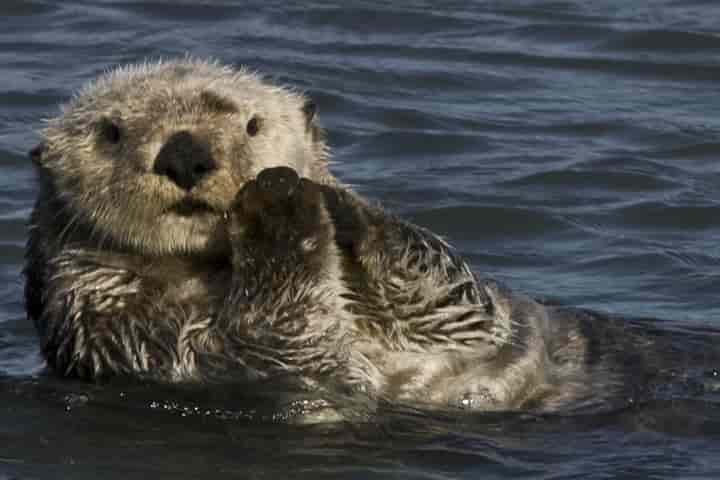As compared to other marine creatures, sea otters are thin and compact. While most of the cold seas mammals depend on a thick layer of blubber to keep themselves warm, the explanation offered for the slender otters was that their fur traps air bubbles thereby creating a barrier of insulation between themselves and the chilly waters they live in.
There is more to what keeps these lovely creatures alive in those ice cold waters as suggested by a new research. In a paper published last week in the journal Science brought to light that these creatures fired their metabolisms in order to keep warm in their watery environs where the temperature hovered between 32 and 59 degrees Fahrenheit. This was reported by Kate Baggaley for Popular Science.
According to the study, sea otters have a different metabolisms that burn calories three times faster than what is expected of animals of their body size. Those extra calories are burned generally by the muscles of these otters.
Also read: New species of dinosaur — among the largest in the world – discovered in Australia
The study author Tray Wright, who is physiologist at Texas A&M University, in a statement said: “You mostly think of muscle as doing work to move the body. When muscles are active, the energy they use for movement also generates heat. Muscles can also generate heat without doing work to move by using a metabolic short circuit known as leak respiration.”
Shivering is one of the ways one can induce muscles to produce heat when there is a drop in temperature. This is so in humans. What makes the case of otters special is that in shivering actual contractions of the muscles is involved while they do something which is different. In place of muscular contractions which are rapid fire, there are leaks in the energy-producing cellular machinery that powers the otters’ muscles.
In the normal course, the cellular energy factories, which are oblong organelles known as mitochondria, break down sugars to pump protons across their inner membrane. Following this using the protons that flow back across that membrane the mitochondria create a molecule called adenosine triphosphate (ATP). The ATP stores energy which can be used to power work such as muscular contractions, according to Michael Le Page’s report for New Scientist.
Till this stage the process remains the same, except that in case of sea otters, some of those protons leak back across the membrane without being used to make ATP. This causes loss of energy in the form of heat.
Talking to Popular Science, Wright said: “These guys have got a metabolism that is really kind of tailored for being inefficient. The muscle can burn a lot of energy even when it’s not being physically active.”
Also read: Odisha stars in crocodile conservation in India
To work this out and prove it, muscle tissue from 21 captive as well as wild sea otters were placed in a device which is called a respirometer. The function of this device is to measure how much oxygen was being used by the muscle cells.
Jaime Chambers, explaining this in Science News, said that the oxygen usage of muscle cells’ allowed the researchers with an indirect measurement of how “leaky” they are.
According to the paper, as per these tests there was significant proton leakage. Up to 41 per cent of the cells’ energy usage was towards production of heat. This usage is between two and seven times more than other mammals. Among these mammals are included Alaskan huskies, humans, horses, elephant seals, and rats, according to Popular Science.
All this leads to suggest that a sea otter which is relatively inactive will require to consume a lot of calories with the objective of keeping warm. The New Scientist states that sea otters need to devote half of their day to eating food equivalent to a quarter of their body weight. Wright told New Scientist: “It’s metabolically costly. These guys have to eat a lot of food.”
Also read: African rats help strife-torn Cambodia to sniff out dangerous landmines
Having found this crucial mechanism of staying warm by sea otters will also help in comprehending the metabolisms of other marine mammals.
In Terrie Williams’s view as told to Science News: “This could be a game changer in terms of how we think about the evolution of all marine mammals, not just sea otters.” Williams is an ecophysiologist at the University of California, Santa Cruz who was not involved in the study.
It is interesting to note that most ocean waters are significantly cooler than the internal body temperature of a mammal, thereby suggesting that mammals would have been required to find a solution to this problem very early in their evolution.
Based on this, Williams told Science News that “this is probably one of the clearest pieces of evidence saying, ‘Here’s how they did it.’”




















